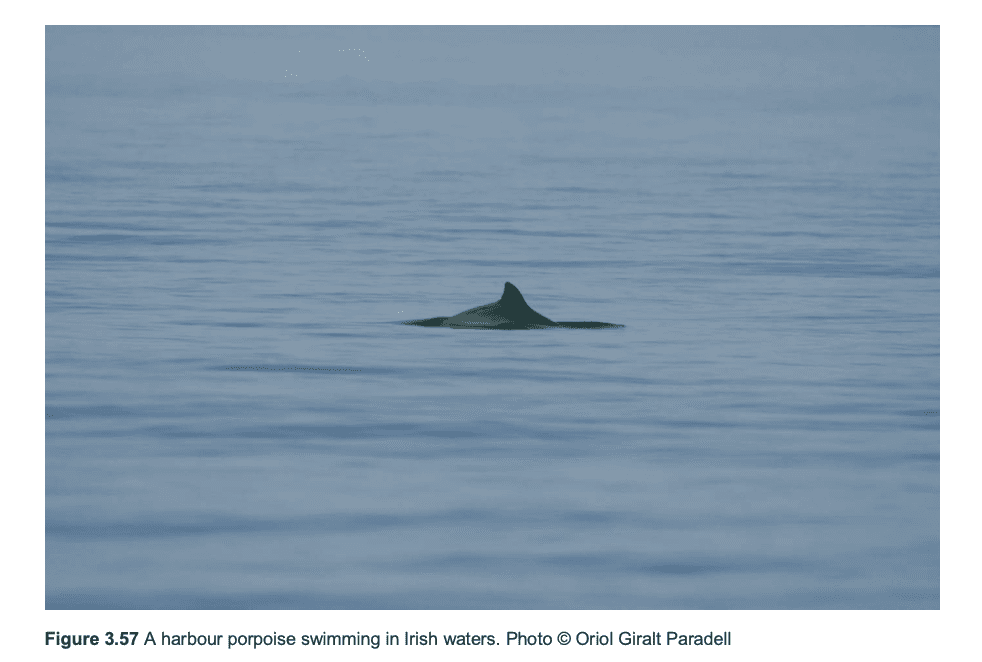The ObSERVE Phase II Aerial Project Reports have recently been published by the Department of Environment, Climate and Communications, providing an important assessment of the distribution and abundance of seabirds and cetaceans in Irish waters. Extensive aerial surveys were conducted by UCC in the Summer of 2021 and the Summer and Winter of 2022, and the results analysed and modelled to produce population estimates for many coastal and offshore species.
Minister of State with responsibility for Communications and Circular Economy, Ossian Smyth said: “The ObSERVE II Aerial Project has collected key data that has greatly improved our knowledge of the environment off the coast of Ireland. This information will help inform the way forward for future regulation and sustainable management of Ireland’s maritime area in tandem with advancing the conservation of protected species, and the identification of important areas for their natural ecology and its conservation”.

Figure 3.58: Sightings of harbour porpoise across all surveys
While data were gathered on many cetacean species, the results for harbour porpoise (Phocoena phocoena) were notable and most concerning. The Irish Sea, in particular the northern part, is indicated as an area of importance for these highly protected animals, and this corresponds with the results from the ObSERVE Phase I project published in 2018 based on surveys in 2015-2017. However, density estimates for harbour porpoise are much lower from the Phase II surveys, and the Celtic Sea region results show an even greater decrease in numbers: “During Phase I of the ObSERVE programme the predicted density distribution maps also highlighted the Celtic Sea as a relatively important area for harbour porpoise, with densities of 0.227 individuals per km2 in Summer. During Phase II, Summer densities in this region were lower at 0.035 individuals per km2 in Summer 2021, and 0.033 individuals per km2 in Summer 2022.”
The IWDG first flagged decreases in the density of harbour porpoises in our inshore waters during NPWS funded Harbour Porpoise SAC surveys. Densities in all three SACs surveyed, Blasket Islands SAC and Roaringwater Bay and Islands SAC off the southwest coast and the Rockabill to Dalkey Island SAC off the east coast, all showed very significant declines in densities over the last two surveys at each site since 2014. The fact that all three sites have shown similar declines suggests the effect is widespread and not restricted to a particular area. The IWDG thought this was likely due to a change in their distribution, driven by the availability of their preferred prey which meant they were less likely to be found within this small protected areas (SACs) and not caused by a population decline.
This downward trend in harbour porpoise numbers in the Irish Sea and Celtic Sea has been recorded in the literature since 2005, while the IWDG Cetacean Strandings Scheme has shown an increase in porpoise strandings over the same period.
Notwithstanding the uncertainty of the modelling and the general paucity of data, all of this indicates a population under pressure. Harbour porpoise, protected under both Annex II and Annex IV of the Habitats Directive, are particularly vulnerable to anthropogenic pressures. By-catch in fisheries, prey depletion, disturbance, pollution and climate change are all potential drivers for these worrying results, which must be considered in the context of the planned construction of five offshore windfarms in the Irish Sea in the coming decade. Porpoises are especially sensitive to underwater noise and in an effort to mitigate for this, other European jurisdictions apply strict limits on the noise allowed from impact piling during windfarm construction. The ObSERVE II results add urgency to the adoption of a similar precautionary approach to underwater noise in Ireland, which will be essential if we are to protect these vulnerable animals and comply with Irish and European legislation.
The full reports are available here: https://www.gov.ie/en/publication/12374-observe-programme/

